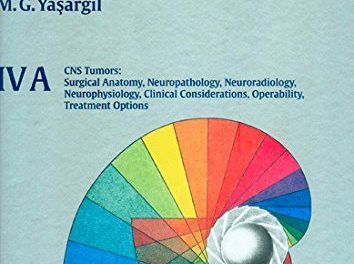Authors: Charles Teo, MBBS, and Michael E. Sughrue, MD
Publisher: Thieme – 253 pages, with 1,041 illustrations
Book Review by: Nano Khilnani
The term keyhole as used in keyhole brain surgery does not mean just a small opening with limited access and field of view. It refers to seeing an entire room through a keyhole in the door to that room using multiple angles of visualization (and even magnification) without the need to remove the door from its hinges, the authors explain.
It is true that large openings enable neurosurgeons to access delicate structures more easily, but larger exposures do mean greater risk to the patient. The trend in recent years has been smaller openings. The development of anesthetic agents that reduce intracranial pressure has made keyhole brain surgeries easier to perform. And these are some of the technological advances in the past few years so that have enabled surgeons to work with smaller openings:
- Better visualization
- Improved light delivery
- More sophisticated instrumentation
Many types of minimally invasive surgical procedures on the brain are now possible, as you can discover yourself by watching the videos on the website we mention beneath this list of 16 chapters of this book. Within the pages where the content is laid out, you can also view full-color photos of the various approaches and detailed sketches of the operations on the brain.
- An Introduction to the Keyhole Concept
- Cognitive Principles of Planning Keyhole Approaches
- Technical Principles of Operating in Keyhole Craniotomies
- The Role of Endoscopy in Keyhole Surgery
- An Atlas of Intracranial Endoscopy
- Steps in Common Keyhole Approaches
- Endonasal Surgery and Its Current Role in Neurosurgical Paradigms
- Keyhole Surgery for Supratentorial Intra-Axial Tumors
- Keyhole Approaches to Tumors of the Cribriform Plate and Orbit
- Keyhole Approaches to Parasellar Masses and the Intrapeduncular Space
- Craniopharyngiomas
- Keyhole Approaches to Tumors of the Middle Fossa, Cavernous Sinus, Tentorium and Lateral Midbrain
- The Cerebellopontine Angle
- Tackling the Petrous Apex Through a Keyhole
- Keyhole Surgery of the Tectum and Pineal Region
- Keyhole Surgery for Foramen Magnum, Fourth Ventricular, and Midline Cerebellar Tumors
You can access more than 100 procedural videos for Principles and Practice of Keyhole Brain Surgery at www.MediaCenter.Thieme.com. Visit this website and enter the code 22RX-VL39-F22F-28HW to get started.
The authors write in the Preface that this is not a book for the novice neurosurgeon. An indication that is the case is that there are no References sections with long lists of books and other sources of information and further study. This is a book for those already knowledgeable, with well-developed skills and adept at removing tumors and performing a variety of operations on the brain.
This is a book about doing neurosurgery in minimally invasive and least intrusive ways. It is about doing it better.
Drs. Charles Teo and Michael Sughrue explain: “Every tumor is different and we can’t randomize all patients to getting their tumor with both big and small craniotomies. So there will always be a doubt. It is manifestly obvious because the least intrusive way to accomplish any treatment goal is the best one. This is taught to medical students from the onset of their studies.”
The authors point out that not more than 20 years ago, it would have been “foolish” to perform most cranial procedures through a small opening because of the following:
- The resolution of the early, extremely pixilated computer tomography (CT) scans gave poor preoperative information by which to plan the surgical trajectory
- Most anesthetic protocols would include a volatile inhalational agent that would cause brain swelling
- Hemostasis with sticking bipolar forceps and without hemostatic agents was challenging
- Illumination of deep areas of the brain was limited, if not impossible
- The need to operate around sensitive neurovascular structures required wide angles of view: in other words, extensive cranial openings
But these developments have made keyhole brain surgeries not only possible but effective:
- Advanced intra-operative navigation using neurophysiology
- Awake techniques
- Better preoperative imaging
- Biological tissue labeling
- Hemostatic agents
- Improved visualization with endoscopes and microscopes
- Real-time viewing
- Single shafted instruments that reduce cluttering
This book is a very valuable contribution by the two authors and two contributors to the advancement of knowledge and innovation in the relatively new, pioneering field of keyhole brain surgery. They have done an outstanding job by presenting a well-organized and concise guide to this new and growing medical and surgical specialty.
Editors:
Charles Teo, AM, MBBS, FRACS is Director of the Center for Minimally Invasive Neurosurgery in Sydney, Australia; Conjoint Associate Professor at the University of New South Wales in Sydney, Australia; and Yeo Ghim Seng Visiting Professor at National University of Singapore in Singapore.
Michael E. Sughrue, MD is Assistant Professor of Neurological Surgery in the Department of Surgery at the University of Oklahoma Health Sciences Center in Oklahoma City, Oklahoma.
Contributors:
Zubair Hasan, MBBS is Associate Research Assistant at the Centre for Minimally Invasive Neurosurgery in Sydney, Australia.
Steven Mills, MD is a Surgical Resident in the Department of Urology at University of California Los Angeles in Los Angeles, California.






